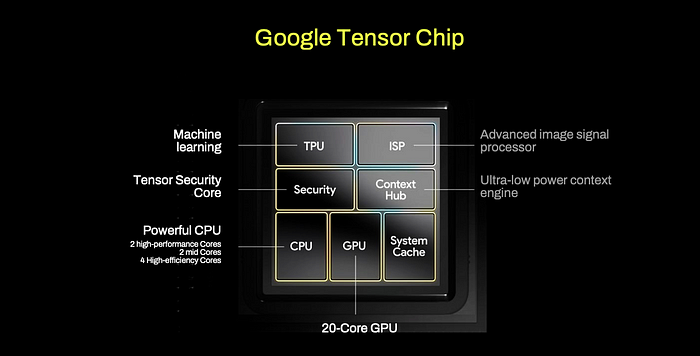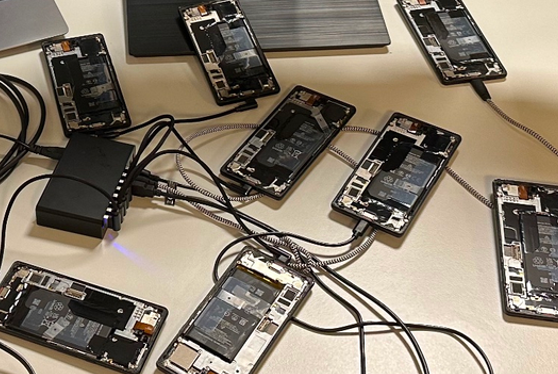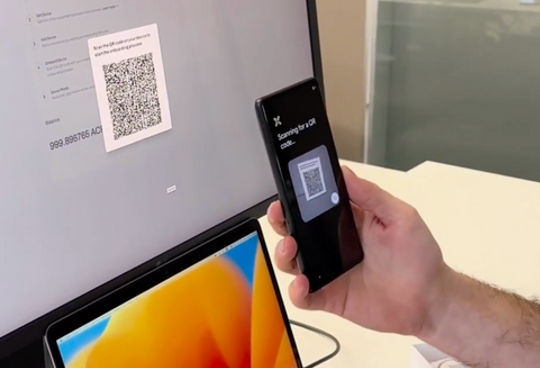
Pioneering the Largest Cloud in the World: Decentralized and Serverless
A few centralized players with intransparent pricing and a lack of confidentiality guarantees largely dominate the Cloud Computing market. Acurast pioneers the mobile cloud through bottom-up permissionless decentralization.
Cloud Computing is omnipresent, with roughly 90% of organizations making use of it, and a trend indication that more and more businesses and organizations are moving on-premise solutions to the cloud. Most of the market is dominated by the big three Cloud Service Providers (CSP), i.e., Amazon Web Services (AWS), Microsoft Azure, and Google Cloud, while most clients use multiple providers.
Tech giants have established virtually unassailable market shares (Source)
The Problem Space
Although businesses and organizations give up on-premise responsibilities and self-reliance, the short- and mid-term cost benefits drive these decisions forward. However, there are multiple facets to choosing a CSP that require careful, strategic consideration in these rationales:
- Costs: To no surprise, a monopolistic market for cloud computing leads to decreased competition and subsequently allows market participants to extract more profit.
- Centralization: Although CSPs undoubtedly provide physically decentralized operations (e.g., data centers in multiple cities, countries, and continents), the majority of these providers are centralized under U.S. jurisdiction, which renders them logically centralized and not resistant to large-scale censorship or disasters.
- Transparency: Moving to a Cloud may seem cheaper, but moving away can be extremely expensive once a vendor lock-in exists — also, opaque policies and frequent changes in pricing lead to unpredictable costs.
- Confidentiality: As a cloud customer, one trusts the CSP completely. It is virtually impossible to verify whether or not confidentiality is assured.
So, how can Acurast potentially present a breakthrough in this seemingly impenetrable market? To answer that, we first need to discuss some background on hardware, Moore’s Law, and whether using this metric in 2023 is still appropriate.
Past, Present, and Future of Moore’s Law
Moore’s law is based on a simple observation that was made in 1965 — the growth in the number of devices per silicon die has become the central driving force of the microchip industry.
In simple terms, Moore’s Law means that the power and speed of computers should increase every two years while their cost decreases over time. (Source)

Is Moore’s Law Already Dead?
From a physics standpoint: Moore’s law will inadvertently collide with the limitations of the physical world: the speed of light is finite, constant, and therefore a natural limitation to the number of calculations that can be processed by a single transistor. Information simply cannot be passed faster than the speed of light.
Currently, bits are modeled by electrons that pass through transistors, so the computation speed is limited by the speed of an electron that passes through matter. James R. Powell calculated that Moore’s law was outdated by 2036 only because of the uncertainty principle, which limits quantum precision and limits our computational capabilities.
There may even be enough arguments to pose the question, “Is Moore’s Law dead?” Although we have reached 3 nm (nanometer) process and further advances are foreseen, the smaller the transistors are becoming, the higher the development costs and complexities are hiking. It is important to note that 3nm does not refer to any actual physical feature of the transistors but rather refers to a manufacturing model.
The rate of progress is slowing and transistors are getting so small that there are just a few dozen atoms along their gates. (Source)
Performance-Per Watt
Another crucial factor is the growing energy and cooling costs of manufacturing these novel chips. Thus, the metric of Performance-per-Watt is considered a more appropriate metric, since the tech roadmap can not solely focus on increasing performance, but needs to focus on energy efficiency as well.
Mobile Chips Change The Game
New chips truly change the game, especially ARM-based architectures such as the ARM 64-based System-on-a-Chip (SoC) designed by Google Tensor.
In detail, these SoCs have dedicated chips for specific workloads, e.g., a Tensor Processing Unit (TPU), which is a dedicated chip for Machine Learning (ML) workloads accompanied by extremely powerful CPUs designed for general-purpose computing, as well as powerful Graphical Processing Units (GPU) equipped with 20 cores to handle visual tasks.

Performance Comparison
Let us look at a comparison of a Power Edge R350 rack server with the same performance as the Google Pixel 7A smartphone; the acquisition price is already six times lower for the smartphone, which does not even consider secondary market prices (e.g., partially broken phones that could still be used for “headless” usage in farms).

Purely comparing the CPU Mark benchmark, it is already, in and of itself, 200 benchmark points higher than the rack server. If one compares the rack server directly with the TPU embedded in the SoC of the Google Tensor, the performance would be 83 times faster on the Pixel device.
Performance-Per-Watt Superiority
Most noticeable is the energy efficiency and cost comparison, which is that the Pixel device uses approximately 50 times less power, and the cost of having a dedicated device with comparable uptime as a rack server still leads to approximately 37 times lower costs.
Acurast: Pioneering Decentralized Clouds
Acurast is where everyone can join the decentralized cloud with their mobile phone. Its execution layer is based on the Acurast Secure Hardware Runtime, which is formed by a decentralized network of Pixel devices running as dedicated Acurast Processors.
Sustainability through Upcycling Damaged Devices
Devices with damages that do not affect the SoC itself (e.g., peripherals, case damage, camera damage) can be purchased for very low prices, i.e., $40 on the secondary market.
Below, you can see multiple processors hooked up to a power hub that assures power supply. Once running, the processors can be managed through the Acurast Console.

For the initial set up process, a working screen and camera are required, but after that, they can be rotated to other devices i.e., can be removed again.

As visible below, community members are already farming cACU (canary ACU) tokens in their mobile datacenters.

If you want to join the mobile cloud revolution, reach out via Twitter, Discord, or Telegram.

